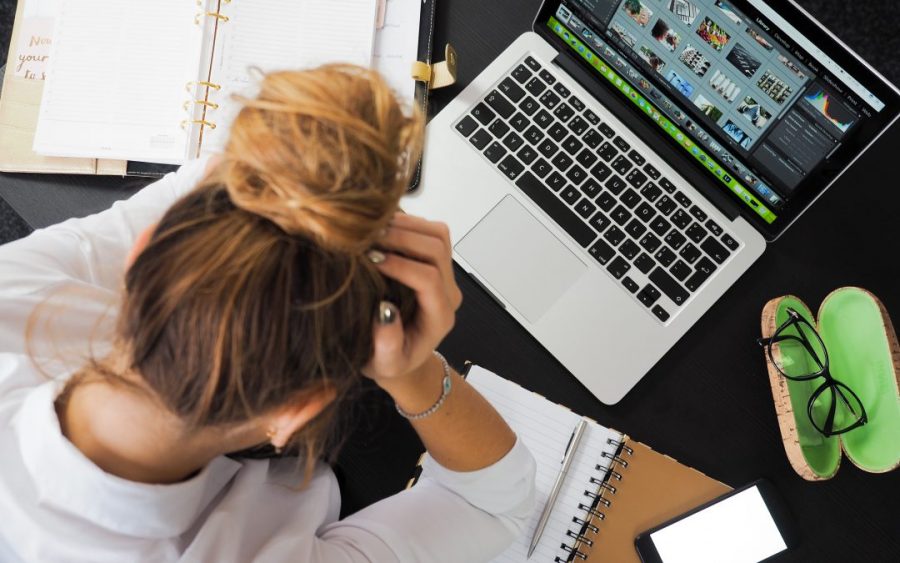The New Student in Class This Year is COVID-19
A Look into Covid-19 Mental Health Effects
September 28, 2020
Type, Type, Type.. there you are learning in front of a computer screen during
a global pandemic. No friends. No socialization. Nothing but an empty room and yourself. This has become your new reality since Covid. For some this is your new reality of virtual learning since Covid. For others they are isolated within classrooms, with desks five feet from one another. They are stuck wearing masks all day and required to walk through one way hallways. This is the new reality of face to face learning.
This year in the month of March the pandemic, COVID-19 spread throughout
the US and resulted in many Texas schools including ours to shut down and go into quarantine. Rushed into quarantine and lockdown, many schools worked to provide students with online learning which is still in effect today as well as in person learning. With online learning being a new thing, there was an increase in mental health concerns for both students and teachers.
“It’s just hard,” Crisis Counselor Connie Mallory said. “Everything is just so
uncertain. Uncertainty for anybody, as humans, just makes us uncomfortable, nervous and unsure.”
Students were shifted into social isolation during the months of quarantine with
virtual learning.
“I didn’t realize how many things were affecting my mental health until I was
stuck in the house 24/7 with myself,” senior Angie Solano said. “My mental health definitely took a toll, but I started to workout and meditate to help me through quarantine.”
As quarantine passed and a new school year was approaching and our school
introduced Face to Face learning September 7 for the students who wanted an option to go physically back to campus.
“School’s the same,” sophomore Sebastian Sosa said. “I just have to wear a mask, but nothing else has really changed.”
With COVID-19 being a global pandemic, schools took precautions to ensure
the health of their students.
“We all are committed to wearing our masks daily to prevent daily spread,”
English teacher Lindsey Dodd said. “We have set up classrooms in a way that allows our students to spread out as much as possible. We also make sure to have hand sanitizer and ensure that there are no shared materials such as markers and highlighters.”
Many Face to Face learners experienced paranoia about how COVID-19 has affected them now that they have returned.
“COVID-19 is a constant ticking in the back of my mind whenever I go outside,”
junior Charles Syblik said. “I’m still very uneasy being in person.”
Teaching with COVID-19 has added to teachers’ workload since their focus is split with face to face students as well as virtual students at the same time.
“My job is much harder now because it’s so different from anything that’s ever been done before,” Dodd said. “Just taking attendance – and taking it correctly – takes so much longer now. Being able to check-in with students one-on-one now requires an extra step. All of these things take time- something we were so short on to begin with.”
With face to face students being on school grounds, and online students learning from their homes, come with disadvantages and advantages.
“Unfortunately for some of those VLA kids it has been harder to track them down and reach out and get them to reach out to us,” Mallory said. “So I think that has decreased in that population, but kids that are at school face to face we have many reaching out.”
According to a 2020 Student Wellness Survey done by Youth LibertySquad, reaching out to anybody during these times is ideal since stress and other mental struggles seem to rise when there is a public panic such as COVID-19.
”Reach out,” Mallory said. “Sometimes all it takes is just being able to be heard
and have someone to listen and have someone say ‘Yeah it stinks, and yeah I get it. I know you’re struggling and this is a hard time.’ Sometimes that’s all we need so just by reaching out you might find what you need.”
If you or anybody you know needs help during times like these here are rooms
and emails to counselors on campus. Connie Mallory room G205, email [email protected]. Tami Vanmeter room H102V, email [email protected].
